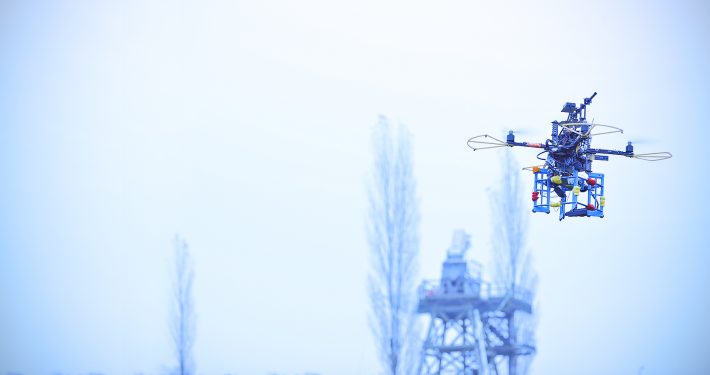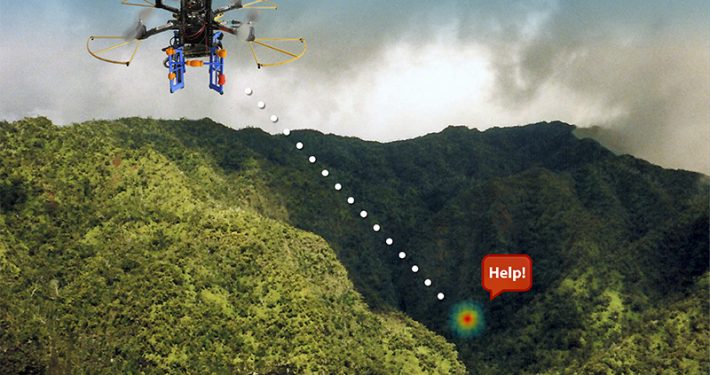NLR is in the vanguard of research into applications for unmanned aerial vehicles and robotics. One example is the development of an acoustic antenna.
In 2012 the HELP! project won NLR’s internal Pioneering Projects Contest. The HELP! project researched whether acoustic sources on the ground could be accurately detected and located from the air. Last year, the practical feasibility of the flying ‘acoustic antenna’ was confirmed. The diversity of technical capabilities and applications of small unmanned airplanes and helicopters is rapidly increasing. It could be useful, for instance, in locating people who are lost in the wilderness (which also explains the name of the project). Other potential applications include the avoidance of collisions between unmanned aircraft and other air traffic or the detection of explosions during large industrial fires, when thick smoke hampers normal observation.
NLR technicians equipped a so-called quadrocopter (a remote-controlled helicopter with four rotors) with an undercarriage that had fifteen microphones: the acoustic antenna. The microphones were hooked up to computer apparatus with a sound card and electronics that relayed data to a portable ground station. The orientation of the microphones in relation to the acoustic source made it possible to ascertain the exact location of the source. It is interesting to note that the undercarriage itself was made of synthetic components taken from a 3D printer.
NLR has now conducted tests in a controlled environment to assess the efficacy of the antenna in practice. The quadrocopter circled over woods near the NLR establishment in Flevoland, where an NLR employee was hidden, calling for help. The UAS proved that it could accurately locate the NLR employee ‘in distress’. Follow-up studies have now been initiated and technical improvements have been made, including digital microphones and a smaller on-board computer.


